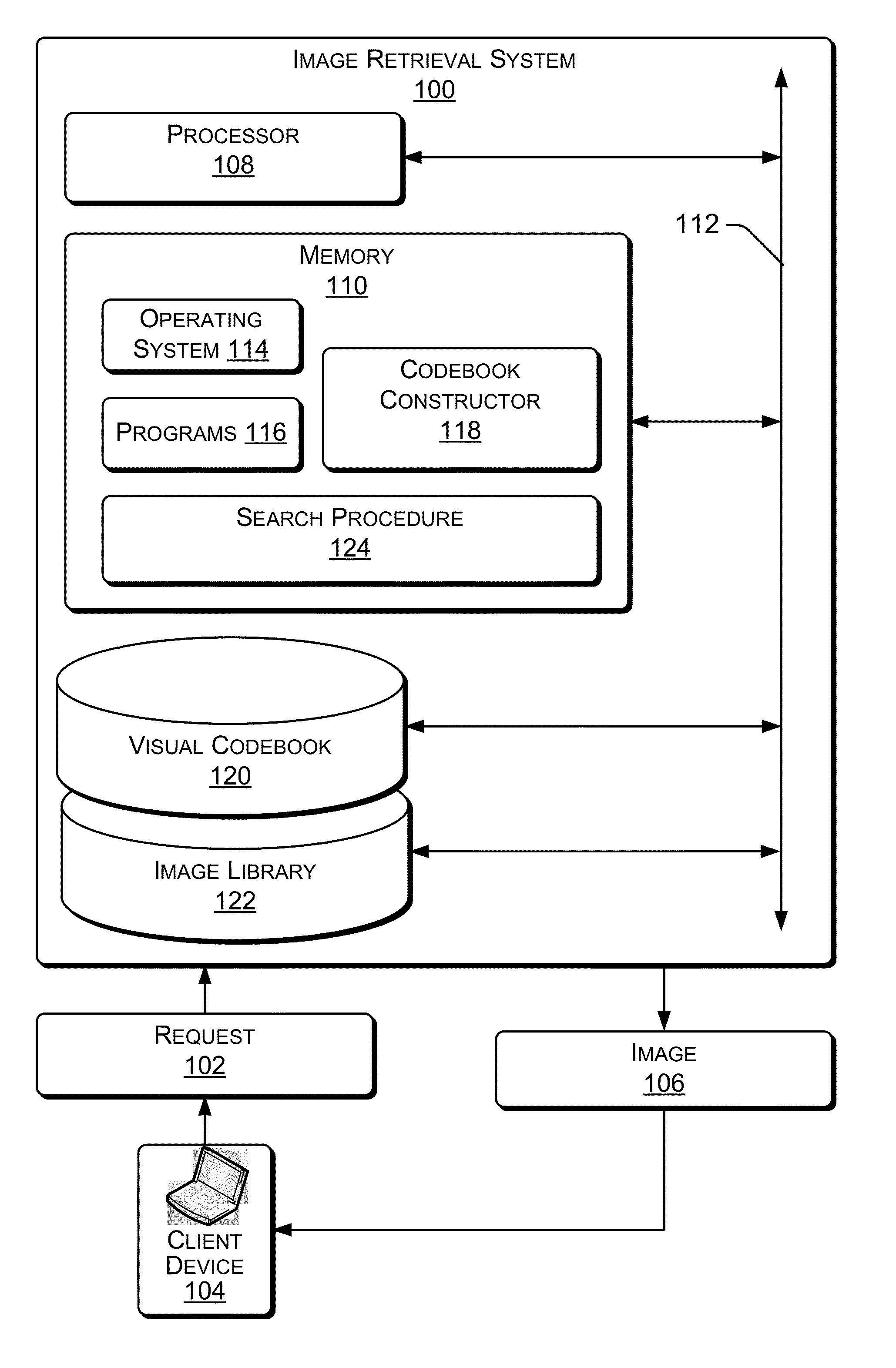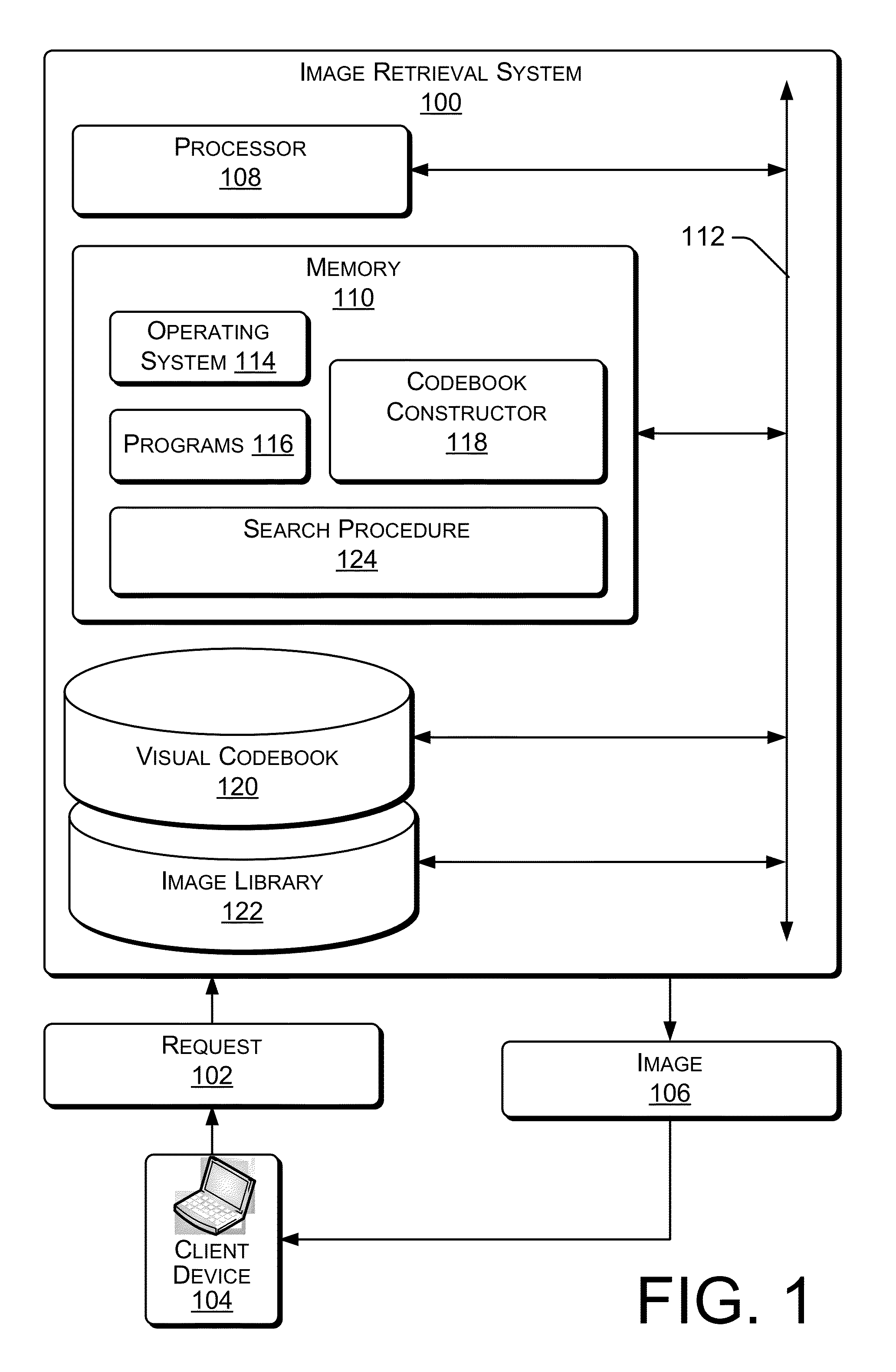Robust large-scale visual codebook construction
a large-scale, visual codebook technology, applied in the field of content-based image retrieval system, can solve the problems of scalability problems, large number of images and features points, and difficulty in both methods
- Summary
- Abstract
- Description
- Claims
- Application Information
AI Technical Summary
Benefits of technology
Problems solved by technology
Method used
Image
Examples
example algorithm
[0059]An example algorithm that may be used in visual codebook construction is indicated below.
[0060]Input: N feature points X={x1, x2, . . . , xN} and K, a number of clusters to be formed.
[0061]Output: a codebook with K centers {μ1, μ2, . . . , μK}.
[0062]Initialize: M={μ1, μ2, . . . , μK}. The initialization may be made in any way desired, such as randomly.
[0063]Repeat until:[0064]a. Build an index, such as by ANN techniques. The ANN techniques may include some aspects of randomization.[0065]b. For n=1 to N, assign each feature point xn to a cluster. For example, obtain ân from the index having aspects of randomization and obtain ãn from a previous or historical assignment of xn to a cluster.[0066]c. Set the assignment to xn according to:
[0067]a~n(t)={a^n(t),if||xn-μa^n(t)(t-1)||2||xn-μa~n(t-1)(t-1)||2a~n(t-1),otherwise,[0068]d. End “for.”[0069]e. Update the centers in each cluster. A location of a center may change due to changes in the feature points assigned that cluster. Up...
PUM
 Login to View More
Login to View More Abstract
Description
Claims
Application Information
 Login to View More
Login to View More - R&D
- Intellectual Property
- Life Sciences
- Materials
- Tech Scout
- Unparalleled Data Quality
- Higher Quality Content
- 60% Fewer Hallucinations
Browse by: Latest US Patents, China's latest patents, Technical Efficacy Thesaurus, Application Domain, Technology Topic, Popular Technical Reports.
© 2025 PatSnap. All rights reserved.Legal|Privacy policy|Modern Slavery Act Transparency Statement|Sitemap|About US| Contact US: help@patsnap.com



